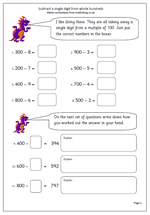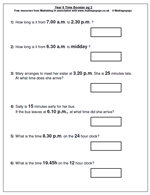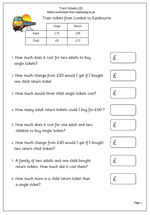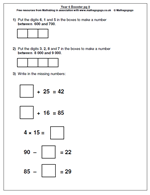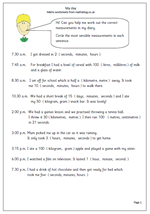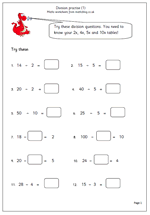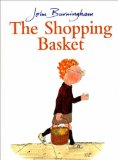This page of mental arithmetic subtraction is most suited to year 4. The first 8 questions are straightforward subtractions of a single digit from a multiple of 100. By year 4 children should be quite confident with these, although there are several different approaches which can be taken to reach the answer. For instance: 300 – 8 can be done by counting back 8 from 300, or by subtracting 10 and adding 2.
The last three questions ask for a written explanation of how the answer was worked out.
This can be found in our Year 4 Knowing Number facts category.
